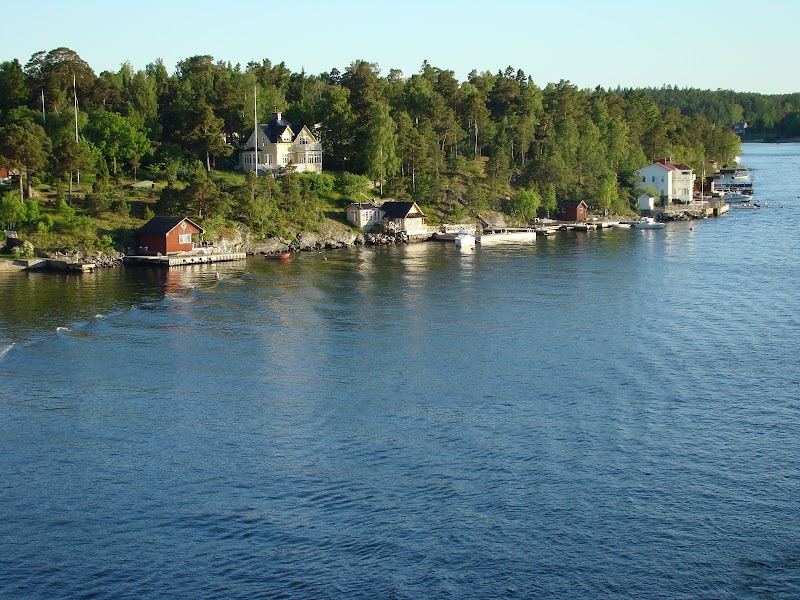
The Stockholm Marathon: A Journey Through Sweden’s Fierce Urban Pulse
The Stockholm Marathon challenges runners with a mix of urban grit and natural beauty, weaving through city streets and vibrant green spaces. Perfect for athletes seeking both a practical race and an immersive Scandinavian experience.
Choose Shock-Absorbing Running Shoes
The course mixes pavement and cobblestones; ensure your footwear offers cushioning and grip to protect joints and maintain traction over varied surfaces.
Hydrate with Precision
Stockholm’s weather can shift quickly; balance water consumption to avoid dehydration without overloading your stomach during the race.
Prepare for Variable Elevations
Incorporate hill training, especially for the stretch near Monteliusvägen, which tests strength and pacing despite its moderate incline.
Timing Is Key
Register early and plan travel to reach the city at least a day prior to acclimate and navigate the race logistics smoothly.
The Stockholm Marathon: A Journey Through Sweden’s Fierce Urban Pulse
The Stockholm Marathon is far from a simple city race; it’s an encounter with a route that challenges runners with its balance of urban landscapes and natural stretches, an experience both invigorating and practical for anyone prepping to tackle it. Stretching exactly 42.195 kilometers, this course weaves through Stockholm's diverse neighborhoods and parks, embracing the city’s waterways that push runners forward and the cobblestone streets that demand respect.
Beginning and ending at the iconic Stadion, the course leads you past forests in Djurgården where trees stand like quiet sentinels daring you onward, and across bridges that offer sweeping views of the archipelago’s restless waters. Elevation changes are moderate but strategic — expect brief climbs that test stamina, especially the mile-long ascent near Monteliusvägen, where the city reveals itself from above.
The terrain varies: pavement dominates, but runners encounter uneven slabs and occasional cobblestone patches. Footwear with reliable grip and cushioning is advised to absorb shock and maintain traction. The urban setting means hydration points are plentiful, but managing your intake against Stockholm's sometimes brisk, unpredictable weather is key.
Practically, marathon day falls in late May or early June, capturing Stockholm as spring spills into summer — a time when daylight is generous but temperatures remain cool. Early mornings feel crisp, river breezes mingle with the city's pulse, and hydration can be a subtle challenge as you sweat in mild heat or struggle with gusts.
Preparation is paramount. Train to handle the mixture of flat stretches and hill segments, incorporate interval sessions, and simulate weather variations to face the unpredictable Nordic conditions. Carry lightweight gear, respect the flow of the race, and use nutrition stations wisely.
For spectators and runners alike, the marathon presents a layered adventure: a dance with a city fiercely alive, its rhythms found in footsteps and heartbeat. Whether you’re chasing a personal best or seeking a scenic run, the Stockholm Marathon offers a practical and poetic encounter with a city that, like the race itself, never stands still.
Nearby Trips
All Adventures
Boat Charters
Water Activities
Adventures near Stockholm, Stockholm County
Discover the unique and memorable adventures that make Stockholm, Stockholm County special.
Frequently Asked Questions
What makes the Stockholm Marathon course unique compared to other city marathons?
Stockholm blends urban architecture with natural landscapes, featuring diverse terrain like cobblestones and forested park trails. Its route follows waterways that seem to propel runners forward, creating a dynamic race environment unmatched by typical city courses.
Are there significant elevation changes to prepare for?
While generally moderate, the course includes strategic climbs—most notably near Monteliusvägen—that require uphill pacing skills and leg strength. Proper hill training is highly recommended.
What local wildlife might runners encounter during the race?
Passing through parks like Djurgården, runners can spot swans gliding through the water, cheeky squirrels darting among trees, and occasionally the silent glide of herons near calmer waters.
Is the course well-marked and supported with hydration points?
Yes, the marathon is impeccably organized with clear signage and multiple hydration and nutrition stations, keeping runners well-supported across the entire 42.195 kilometers.
Are there lesser-known spots along the marathon route worth noting?
Yes, look for Monteliusvägen’s viewpoint offering a captivating city panorama often missed by spectators, and the serene stretches of Tantolunden park where urban noise fades behind leafy canopies.
How does Stockholm’s weather typically affect marathon conditions?
The late spring timing usually affords mild temperatures and long daylight. However, wind gusts near waterways and sudden light rain require adaptability in pacing and gear choice.
Recommended Gear
Cushioned running shoes with good grip
Protects feet on mixed surfaces and absorbs impact on cobblestones.
Lightweight running rain jacket
Defends against sudden showers and wind without overheating.
Hydration belt or handheld bottle
Ensures consistent hydration during warm race sections when weather is unpredictable.
Technical moisture-wicking apparel
Keeps sweat off the skin, reducing chafing and maintaining comfort throughout.
Local Insights
Hidden Gems
- "Monteliusvägen viewpoint for exceptional cityscapes"
- "Quiet trails in Tantolunden park along parts of the race"
- "Hidden waterways threading through Djurgården"
Wildlife
- "Swans and ducks boldly patrolling city lakes"
- "Red squirrels that animate the forested sections"
- "Herons and other water birds hiding near shores"
History
"The marathon finishes at the historic Stockholm Stadion built for the 1912 Olympics, connecting today’s runners with a century of Swedish athletic tradition."
